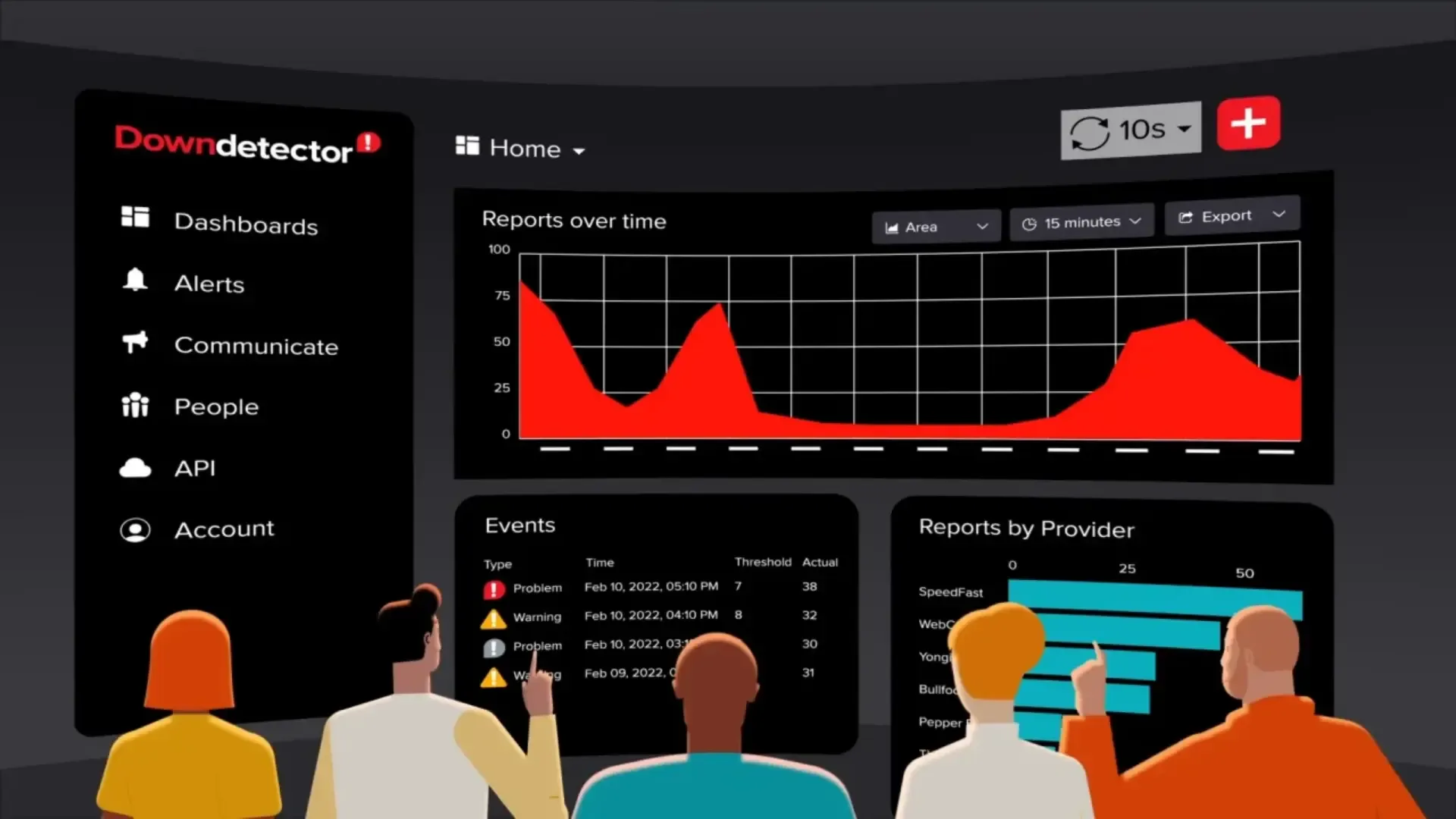Ever wondered if that app glitch or mobile signal hiccup is just you—or a widespread outage? Enter Down Detector, the crowd-sourced outage radar trusted by millions worldwide. Think of it as your go-to tool for sorting between “my internet sucks” and “everyone else is screwed too.”
📡 The Origin Story
Founded in 2012 by Tom Sanders and Sander van de Graaf in the Netherlands, Down Detector’s mission was simple: help journalists and users detect outages fast. Acquired by Ookla in 2018, it now covers over 12,000 services across 45 countries.
🛠️ How It Actually Works
- Crowd-sourced reports: Users report issues via the site or app—whether it’s Wi‑Fi, smartphone apps, or even smart home devices.
- Baseline anomaly detection: The system flags outages only when reports spike above typical volumes, reducing false alarms.
- Twitter and support page scans: Automated monitoring of official status channels and Twitter broadens detection beyond the platform itself.
- Live maps & timeline graphs: Geolocation plots and hourly charts help you see where and when issues pop up.
📱 Real-World Example: Three UK Outage
On June 25, 2025, Down Detector lit up with reports when the Three UK network went down across voice, SMS, and data. It showed:
- 🔺 Spike in voice-SMS issues around 7:45 am BST
- 📉 Reports tapering from a peak ~9,000
- 🧭 Map hotspots—London, Birmingham, Glasgow
This timeline aligned closely with updates from Three via X (formerly Twitter), showing Down Detector's accuracy.
⚖️ Strengths & Limitations
Strengths:
- Real-time crowd feedback
- Service-wide perspective—whether personal or global
- Useful for both consumers and enterprises
Limitations:
- Reliant on user reports—may miss niche outages
- Can’t detect issues before users report them
- Limited depth for business-level diagnostics
🔧 How You Can Use It
- Check Down Detector before rebooting your router
- Use the map for geo-specific troubleshooting or workarounds
- Follow status updates and alerts if you rely on specific services
- For small businesses, integrate Down Detector’s API to preemptively inform your customers
🔍 Beyond Downtime: The Bigger Impact
Beyond consumer value, Down Detector has become part of web security intelligence. Network ops teams and cybersecurity firms use its data to detect distributed failures, peering faults, or DDoS attacks far faster than some internal tools alone.
📌 Final Analysis
Down Detector isn’t perfect—but it nails one essential thing: transparency. It brings community-powered visibility to a world increasingly dependent on digital services. And while it may lack enterprise-level granularity, its real-time alerts and crowd wisdom make it indispensable for savvy users and developers.
Keep an eye on TechPickr123’s Insights section for live outage breakdowns, tool comparisons, and expert recovery tactics.




